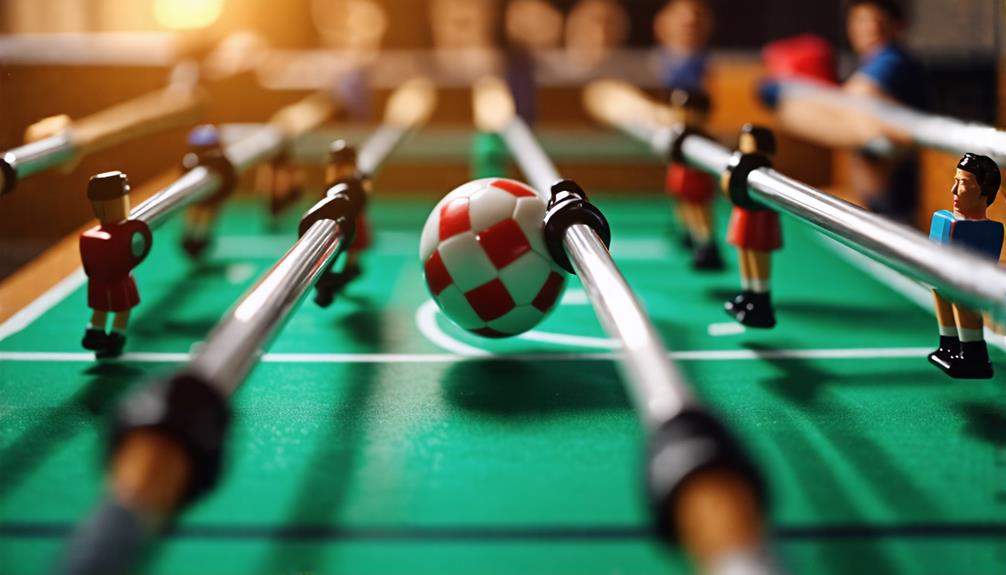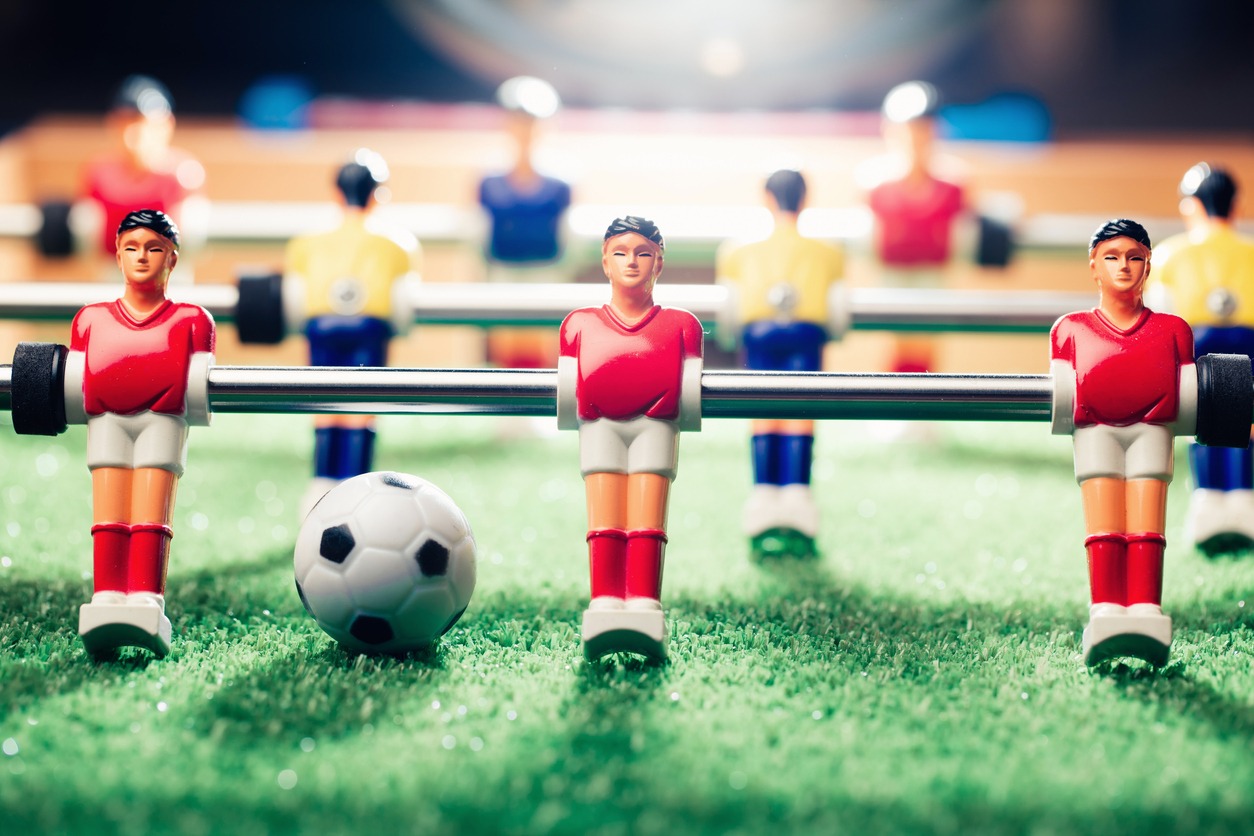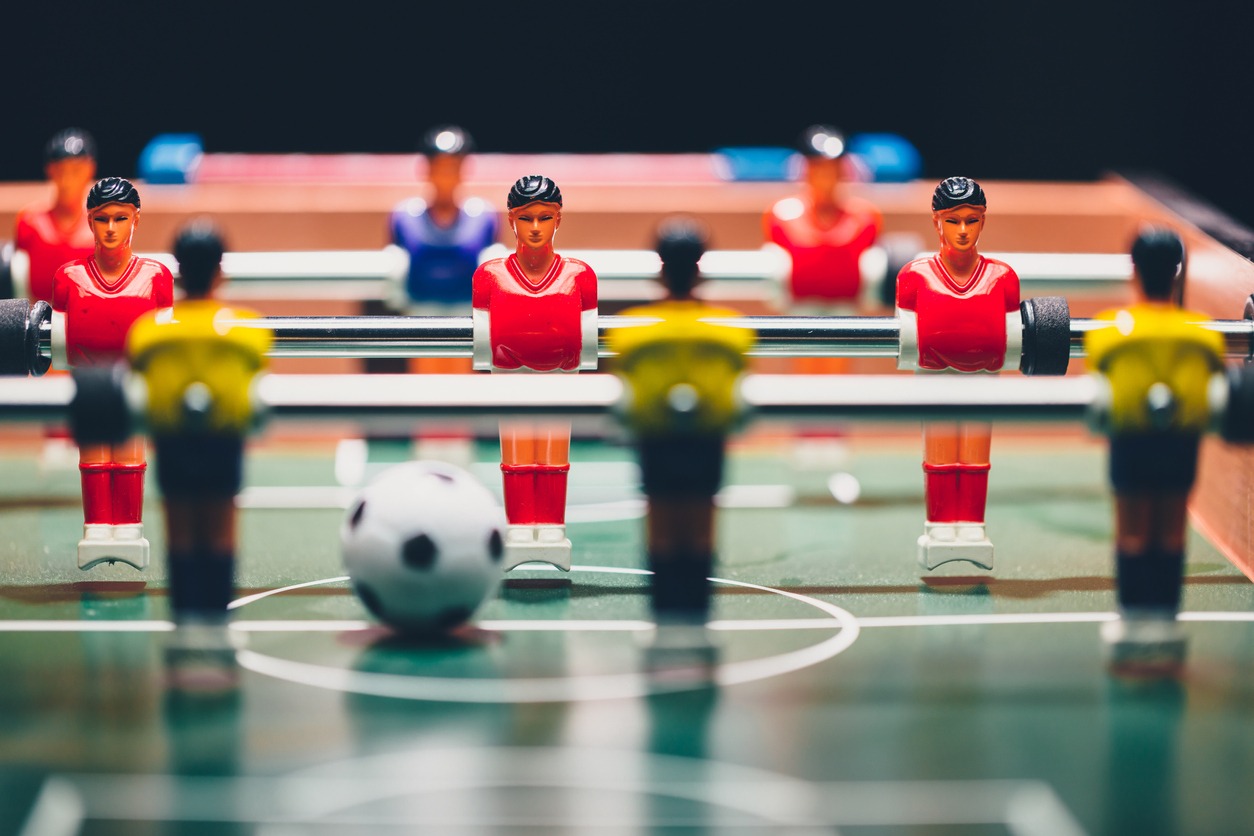Are Foosball Tables Supposed to Be Flat?
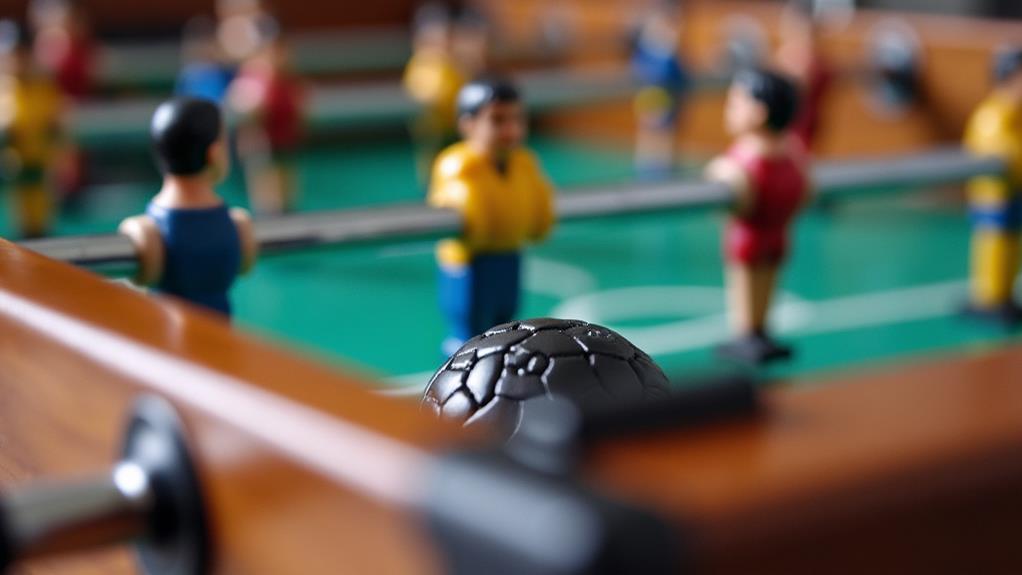
Yes, foosball tables should be flat to guarantee fair and enjoyable gameplay. A flat surface assures consistent ball movement, allowing you to execute precise shots and strategies. Uneven tables cause unpredictable ball behavior, affecting accuracy and leading to frustration. To maintain flatness, regularly check with a carpenter's level and adjust the legs or use shims if needed. A stable playing surface not only improves your gaming experience but also helps in skill development. Curious about more ways to keep your foosball table in top shape?
Importance of a Flat Surface
A flat surface is essential for foosball tables because it guarantees a consistent playing field, which is fundamental for fair gameplay and accurate ball movement. Confirming that your foosball table is perfectly flat allows for smooth ball movement and precise shots, which are critical for an enjoyable game.
Adjustable levelers are a key feature that helps maintain this flat surface, especially when dealing with uneven floors. They allow you to fine-tune the table's height, confirming stable play and a balanced playing field. Without these levelers, your game could suffer from unpredictable ball trajectories, which would negatively impact player control and the complete gameplay experience.
The standard playing field size of approximately 47" L x 27" W is designed with the need for a flat surface in mind. This size confirms that all players have an equal opportunity to perform well, adhering to manufacturers' specifications for peak performance. Manufacturers stress the importance of a flat playing surface because it directly affects both the game's fairness and your enjoyment. By maintaining a level table, you guarantee that every match is played on an even playing field, enhancing both competition and fun.
Common Issues With Uneven Tables
Over time, foosball tables can develop uneven surfaces due to wear and tear or imperfect flooring. When your foosball table isn't level, you might notice unpredictable ball behavior that makes it hard to control the game. This affects the accuracy of your shots and the general playing experience. A level playing surface is vital for consistent ball movement, guaranteeing fair and enjoyable gameplay.
An uneven table can also lead to fatigue or strain as you and your friends try to compensate for the tilt. This can diminish the fun and potentially impact your performance. To prevent these issues, regular maintenance is fundamental. Most foosball tables come with adjustable legs, allowing you to correct any unevenness caused by floor imperfections. By routinely checking and adjusting the legs, you can maintain the level playing surface necessary for high-quality gameplay.
Ignoring these maintenance steps can result in long-term problems with gameplay quality, making the game less enjoyable. Don't let an uneven table ruin your foosball matches. Keep an eye on the table's levelness and make adjustments as needed to guarantee a consistent, fun playing experience for everyone.
How to Level Your Foosball Table
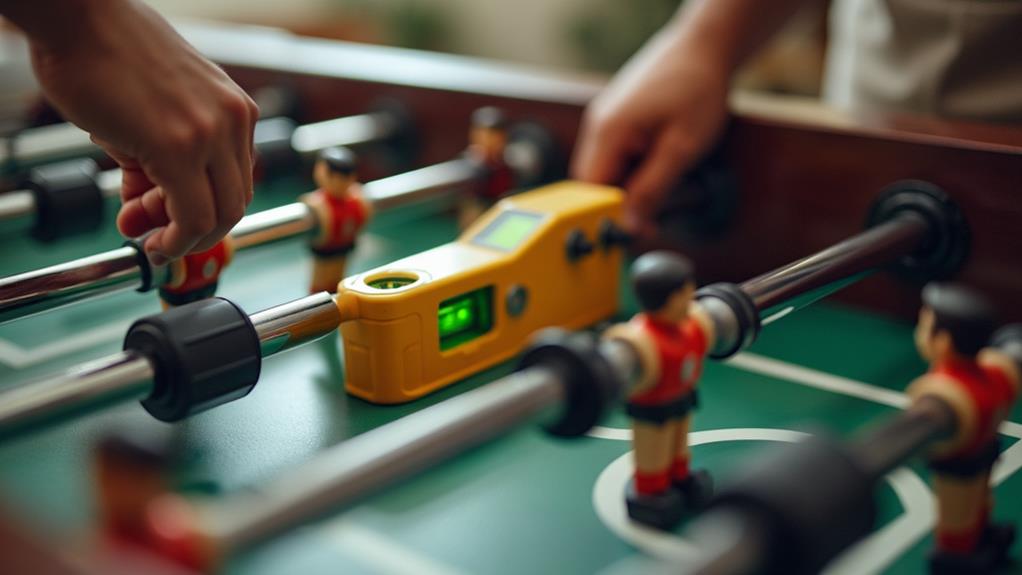
Leveling your foosball table is fundamental for guaranteeing fair and enjoyable gameplay. To achieve this, follow these steps:
- Check the Level: Place a carpenter's level on the playing surface. Verify the bubble is centered. This will show if your foosball table is level.
- Adjust the Legs: Most foosball tables come with adjustable legs. Twist them to raise or lower each corner until the table is balanced. If your table lacks adjustable legs, proceed to the next step.
- Use Shims: If the table remains unlevel, place shims or small pieces of wood under the legs. This will help stabilize and balance the table evenly.
After leveling, it's important to regularly recheck the table, especially after moving it. Rechecking guarantees you maintain ideal gameplay conditions. A level foosball table means the ball moves predictably, enhancing your playing experience. Remember, a stable playing surface is critical for fair play. By following these steps, you'll make sure your table remains in top condition, offering the best balance and gameplay. Don't overlook the importance of a properly leveled foosball table; it makes all the difference in your matches.
Impact on Gameplay
Ensuring a flat playing surface profoundly impacts gameplay by providing consistent ball movement, which is essential for fair play and accurate shots. When your foosball table is perfectly flat, the ball rolls predictably, allowing you to develop precise tactics and strategies. This consistency is vital for fostering competitive fairness, especially when honing your skills in preparation for matches on regulation foosball tables.
An uneven surface, on the other hand, leads to unpredictable ball behavior, making it difficult to control the ball and execute planned moves. This unpredictability can frustrate players and detract from the general gameplay experience. You'll find that maintaining a flat surface not only improves your enjoyment but also greatly aids in skill development as you can rely on consistent ball movements to practice and refine your techniques.
Adjustable legs are a handy feature on many foosball tables, enabling you to maintain a flat surface even if the floor beneath is uneven. With these adjustments, the playing field remains level, ensuring ideal player control and a more engaging game. By prioritizing a flat playing surface, you create an environment where fair play and skill can truly shine.
Maintaining a Flat Table
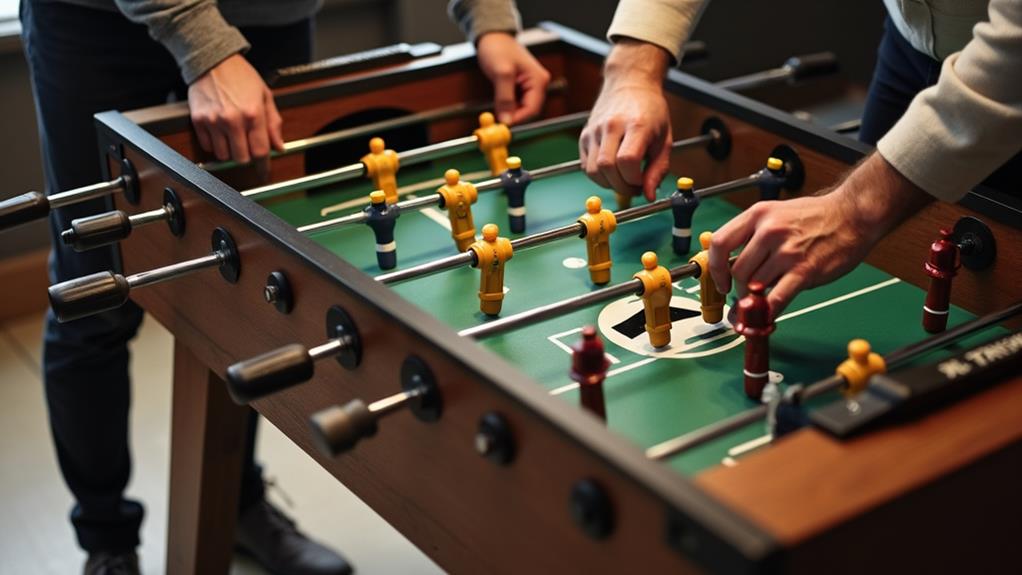
To maintain a flat table, start by regularly checking the level of your foosball table to confirm it remains even. A flat playing surface is essential for consistent ball movement and fair gameplay. Uneven surfaces can lead to unpredictable ball behavior, negatively affecting player performance.
Here's how you can guarantee your table stays flat:
- Adjustable Legs: Use the table's adjustable legs or built-in leveling systems to achieve a perfectly flat surface. Many regulation foosball tables come with these features, making it easier to maintain an even playing field.
- Stable Floor: Place your foosball table on a solid, stable floor rather than on carpet. Carpets can cause unevenness over time, undermining the flat surface you need for improved gameplay.
- Regular Checks: Periodically inspect the table for wear and tear. This includes checking the rods and playing surface. Regular adjustments will extend the lifespan of your table and maintain consistent ball movement.
